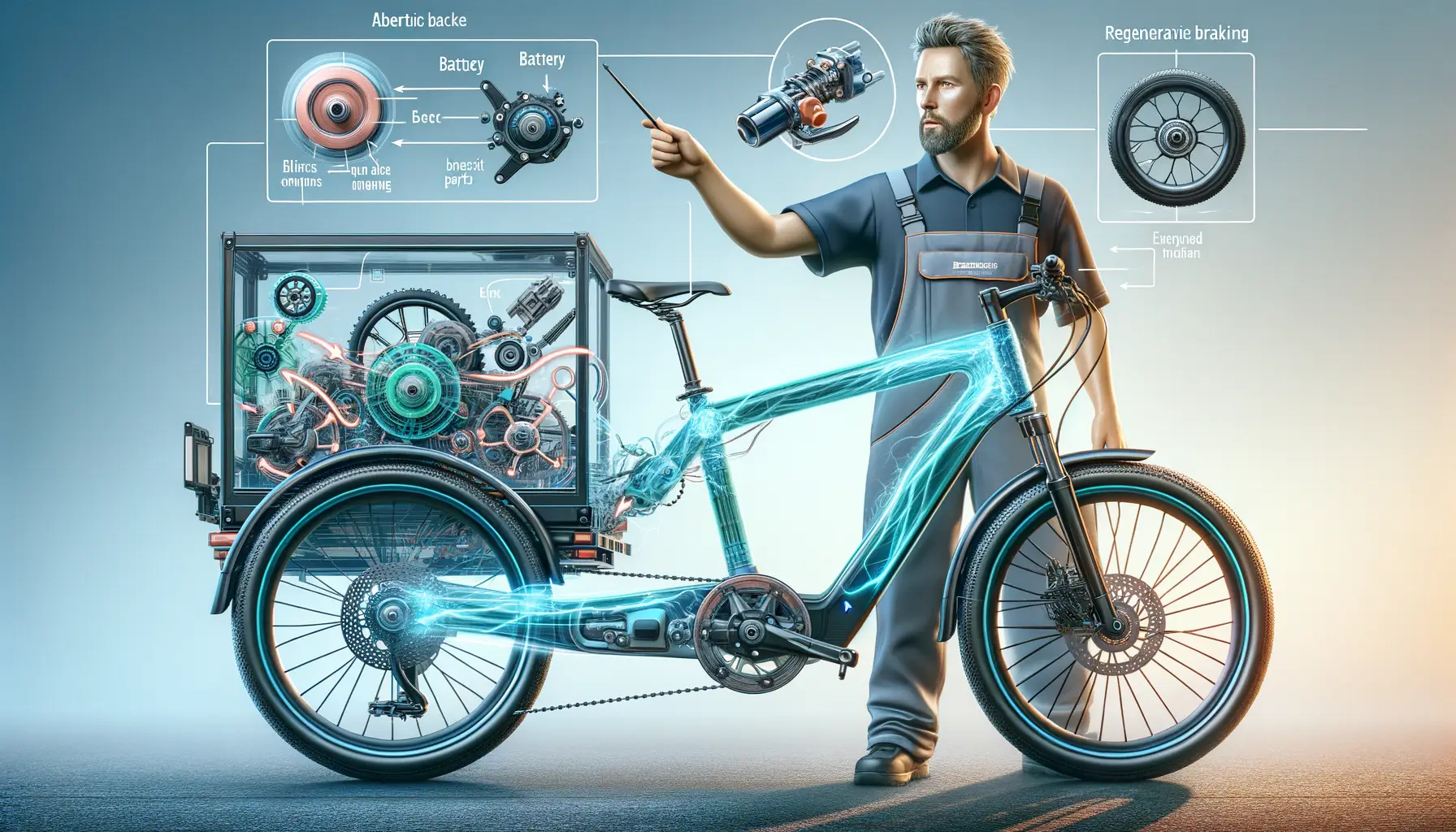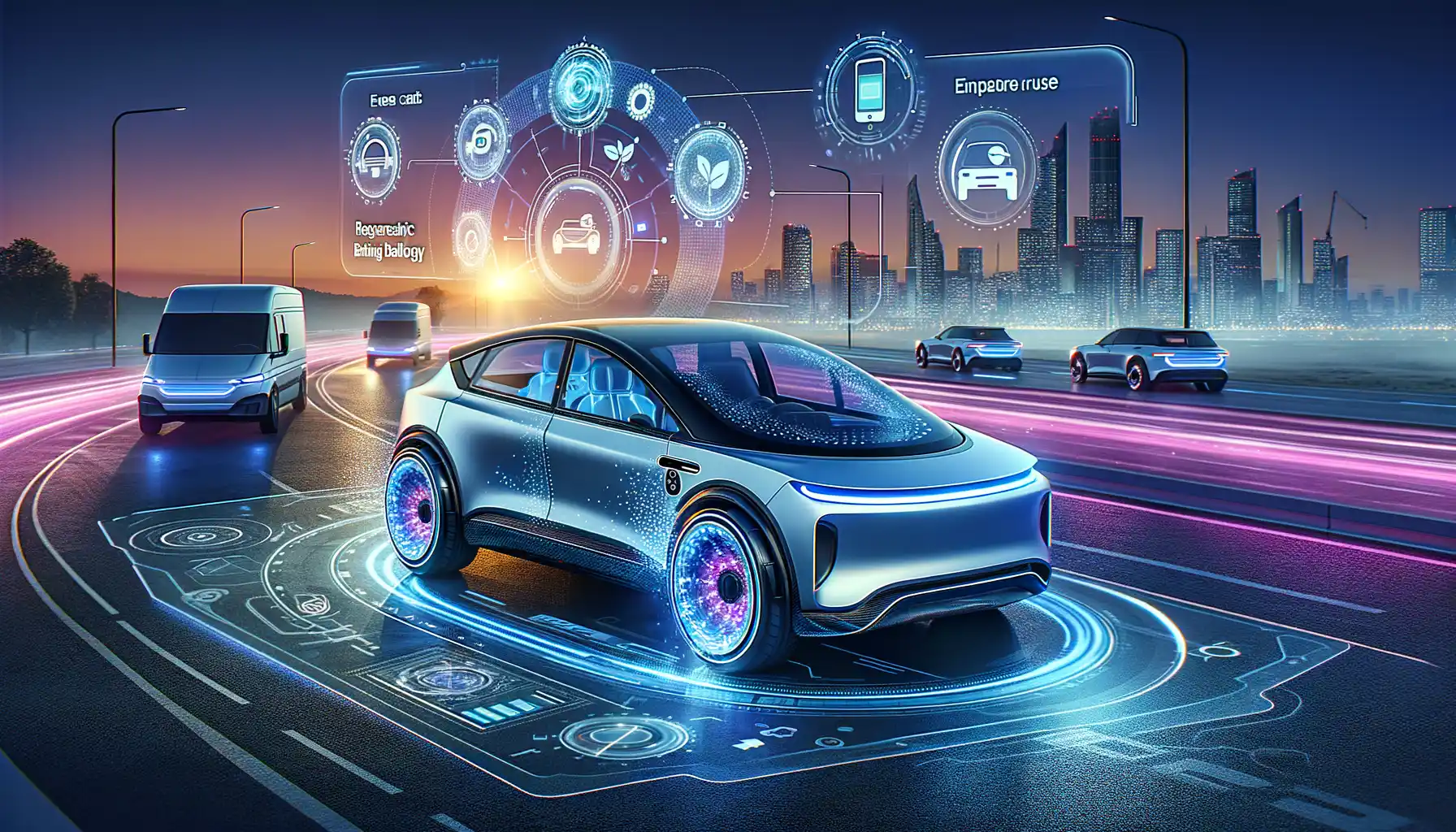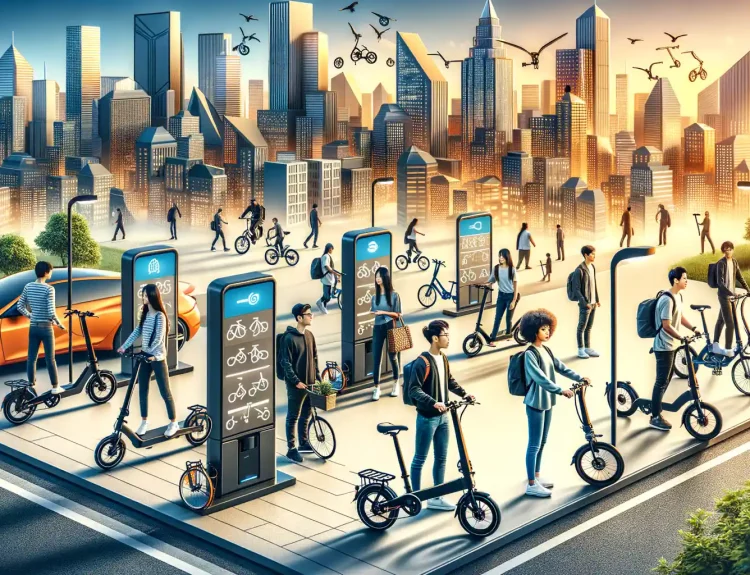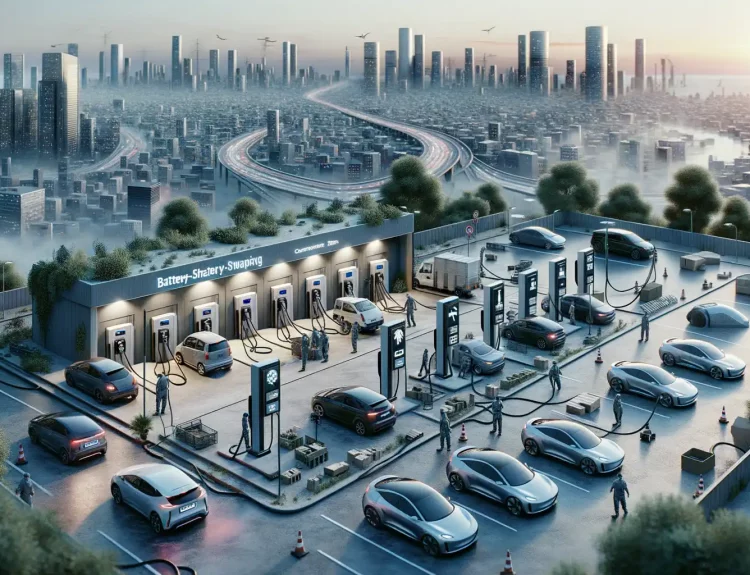Introduction to Regenerative Braking Systems
Imagine this: you’re pedaling your electric cargo bike, cruising down a hill with a full load of groceries or packages. Normally, you’d rely on your brakes to slow down, right? But what if I told you that energy could be captured and reused instead of wasted as heat? Welcome to the fascinating world of regenerative braking systems, where every downhill glide becomes an opportunity to recharge your ride.
What Makes Regenerative Braking So Different?
Conventional brakes work like this: friction slows you down, and that energy vanishes into thin air—poof! But with regenerative braking, your bike flips the script. Instead of wasting energy, it’s sent back into the battery, giving your e-cargo bike a power boost for later use. Think of it as turning every stoplight and steep descent into a tiny pit stop at an energy station. Efficiency at its finest!
- Your rear motor acts as a mini-generator, converting your bike’s kinetic energy into electricity.
- As you decelerate, this process gently feeds your battery, saving precious energy for longer rides.
It’s not just tech—it’s sustainable magic in motion, letting you go further while doing more. Who knew stopping could feel this empowering?
How Regenerative Braking Works in Electric Cargo Bikes

Turning Energy Into Opportunity
Regenerative braking in electric cargo bikes isn’t just a fancy feature. It’s like giving your bike a superpower—a way to recycle energy that would otherwise vanish into thin air. Here’s how it works: whenever you slow down or start braking, the motor flips its role. Instead of using electricity to move the bike forward, the motor becomes a mini generator, capturing kinetic energy from your motion and turning it back into electrical energy.
Think of it this way: every hill you glide down or every red light you stop at is an opportunity for your bike to recharge itself. That captured energy flows straight back into the battery, ready to power up your next stretch of riding. Cool, right?
What’s Happening Behind the Scenes
To make it even clearer, let’s break it down:
- Kinetic energy: The energy generated by the bike’s movement when it’s in motion.
- Conversion: The reverse function of the motor converting that kinetic energy into electricity.
- Battery storage: The electricity gets stored in the battery, extending your range while cutting waste.
It’s not just efficiency—it’s sustainability woven seamlessly into your ride.
Benefits of Using Regenerative Braking in Electric Cargo Bikes

Boosting Efficiency While Saving Your Energy
Imagine gliding down a hill with your electric cargo bike, fully loaded with groceries or delivery items. Every squeeze of the brake doesn’t just slow you down—it’s like secretly recharging your battery. That’s the magic of regenerative braking. Instead of wasting that momentum as heat, this system transforms it into usable energy. It’s efficiency at its finest.
But hold on—this is more than just about saving electricity. Regenerative braking reduces wear and tear on your traditional brakes, helping them last longer and saving you money. It’s like giving your hardworking bike a little self-care spa day after every ride.
Making City Riding Easier and Greener
If navigating busy city streets feels like a constant stop-and-go dance, regenerative braking is your new rhythm partner. Here’s why:
- Eco-friendly performance: By converting kinetic energy into power, you’re actively reducing waste and embracing sustainability.
- Smoother rides: No more jerky stops! Regenerative braking provides more controlled deceleration, making every halt feel graceful.
- Extended range: Even small energy boosts can keep your cargo bike going farther with less stress.
It’s not just braking; it’s a smarter, greener way to move.
Challenges and Limitations of Regenerative Braking Systems

Where Regenerative Braking Hits a Few Speed Bumps
When it comes to regenerative braking in electric cargo bikes, not everything is smooth sailing. While the technology feels like magic—turning momentum into energy—there are some quirks that might make you pause before celebrating this innovation. Let’s dive into a few of the tricky spots.
For starters, efficiency isn’t always top-notch. Regenerative systems recover only a small fraction of the energy lost during braking. Think about it: coasting downhill with a full load of groceries might feel powerful, but the system isn’t sending all that energy back into your battery. Estimates suggest it recaptures just 5–10% of the potential energy at best.
Another snag? The effectiveness hinges on how much braking you’re actually doing. If you use your bike mostly for flat terrain or short stops, the return on regeneration is small.
- Steep downhills? Great! Flat city commutes? Not so much.
- And what about sudden stops? Regenerative brakes share the stage with traditional brakes, meaning not all energy gets captured.
Lastly, there’s the added complexity. Integrating regenerative tech into a cargo bike’s drivetrain means more parts and, unfortunately, more maintenance. It’s a balance—between innovation and practicality—that riders must weigh.
Future of Regenerative Braking Technology in Electric Vehicles

Revolutionizing the Way We Harness Energy
The future of regenerative braking in electric vehicles (EVs) is more than just a technological upgrade—it’s a full-blown energy revolution. Imagine your electric cargo bike seamlessly reclaiming energy every time you brake, powering it forward with the very motion that could otherwise slow it down. Sounds futuristic? Well, this future is closer than ever.
With advancements in materials like high-efficiency magnet systems and ultra-durable batteries, engineers are unlocking ways to squeeze out even more energy during those stop-and-go moments. Companies are exploring how AI systems can anticipate braking patterns and fine-tune energy recovery for maximum efficiency. Think about it: brakes that “learn” your riding habits. It’s like they’re getting smarter each time you ride!
- Supercapacitors: A next-gen alternative to traditional batteries, offering faster energy storage during braking.
- Wireless Energy Transfer: Emerging technologies aim to transfer recaptured energy without cumbersome wiring.
And let’s not forget, this isn’t just about performance—it’s about sustainability. Each watt of power saved means a cleaner planet. The road ahead for regenerative braking? It’s glowing green.



